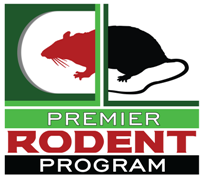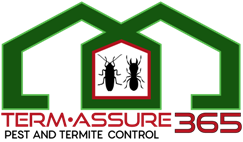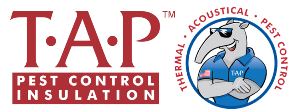Casey Key
Where Relaxation is a Priority
Being one of the most isolated communities on the Gulf Coast of Florida, Casey Key has always attracted an eclectic group of upper-class snow birds. Novelists, movie stars, mobsters and architects have all sought the quiet seclusion from the rest of the world that the island provides.
Although there is very little evidence to prove the claim, the earliest inhabitants of Casey Key, like most of old Florida, are believed to have been native tribes.
Rumors of the discovery of a Calusa burial mound arose in the 1940’s, but if it did exist, it was entirely destroyed. Preserved skulls and artifacts alleging to have been found there were quickly sold off to the highest bidder. But some of the earliest maps of the area label the island with its supposed Seminole name: Clam Island.
At some point prior to Florida becoming a state in 1845, the island took on the name Chaise’s Key, although no records remain that explain how the name came about.
Request a "Quick Quote" to schedule a free inspection!
Just provide a few details and we'll get in touch with you right away!
Around 1840, US Army Captain John Casey was sent to oversee the removal of the Seminole Indians in the area, per the Congressional Removal Act of 1830, as well as do a detailed survey of the surrounding areas for future development.
Casey was well-esteemed by his peers, having graduated 11th in his class at West Point, along with future general Robert E. Lee, and was well-liked by both the army and the native tribesmen for his fairness and commitment to excellence.
So respected was his name that it is believed that the spirit and bond of trust he established allowed a fragile peace to exist and delayed the eruption of a third Seminole War for several years until his fragile health and Army transfer left both sides without a suitable advocate.
When he wasn’t maintaining relations between the natives and the US government, Casey, along with a few other conscripts, meticulously surveyed and laid out the Gulf Coast, Charlotte Harbor, and all the way down to Fort Myers. The work they did was utilized for maps for generations afterward, and in 1856, Lt. J.C. Ives made the decision to honor Casey by naming the small island after him.
In 1872, Zachariah M. Dryman visited the area and would return in 1909 to homestead more than 100 acres. In the meantime, Isaac Shumard brought his family, including 2 sons and 4 daughters, to Casey Key from Missouri, to make their fortunes. His eldest, Jesse, built his own home further to the north.
Sometime in the early 1910’s, Shumard sold all of his property save the 10 acre family homestead to the Sarasota-Venice Company, who planned to build a huge luxury hotel on the Southern tip of the key. Those plans were scrapped when the United States entered World War I.
Prior to the war, developers began marketing the Sarasota area as the “eternal garden,” hoping to bring even more visitors and residents to the area. One enterprising developer even attempted to rename the key Treasure Island and spread rumors of buried treasure to try and spur sales of his properties on Casey Key. The stories of buried pirate treasure outlived the temporary name change, lingering still today.
Shortly after Sarasota County was split off from Manatee, a bond was issued to create better roads and bridges in the new county, including one at either end of ‘Treasure Island.’ $4.8 million dollars was spent over the next 5 years making the area more drivable. Because of the development opportunities, Casey Key was given priority, and in 1925 the Champion Bridge Company began building a single lane “swing bridge” at the northernmost point of the island.
Blackburn Point Bridge (also sometimes called Treasure Island Bridge) was completed in December of 1926, just in time to see the real estate market crash, followed by the stock market 2 years later. The bridge itself is now a historical monument, one of the last remaining swing-style bridges built in that era, although it no longer moves.
After interning in Sarasota, Paul Rudolph started his own architecture firm with Ralph Twitchell and together they designed several iconic Sarasota homes, including three notable homes on Casey Key. The Joseph W. Lippincott House, designed for the publisher in 1935, the Miller House in 1948, and Rudolph’s own home: the Deering House. A fire in 2007 destroyed most of the Miller house, but Rudolph’s legacy lives on in the Yale Art and Architecture Building that he later designed.
Following World War II, a second Florida land boom erupted, doubling the state’s population in less than 10 years. However, the residents of Casey Key decided they’d rather preserve their land, and in 1950 formed the Casey Key Protective Association. The Association leapt into action – preventing further dredging of the bay, zoning the bulk of the island for residential use only and paving the one road that ran the length of the island, on the condition that its country road look would be preserved.
In 1951, the Sutcliffe House was built, including its own private lagoon. Sutcliffe was connected to several famous people, and hosted many of them in his home, including Cassius Clay, who would later become Muhammed Ali. It recently sold, reportedly for nearly $13-million.
Legendary film director Victor Nunez has a winter home on Casey Key, and in 1984 used the island to shoot the made-for-TV movie adaptation of John D MacDonald’s Flash of Green, starring Ed Harris.
Although it’s never been proven in a court of law, the largest estate on Casey Key is reputed to have a very interesting history. In 2001, in the midst of prosecuting Joe “the German” Watts, a legendary hit man and loan shark for the Gambino organized crime family, Casey Key took center stage. According to government lawyers, in 1996, Watts used his ill-gotten gains to purchase the land at 411 Casey Key Road and build a huge, walled estate compound for his retirement. All done through an energy drink shell company run by one “Tony Florida.”
Strangely enough, just prior to the trial, another home owned by Tony Florida was sold, for a record (at the time) $9-million dollars to best-selling author Stephen King & his wife Tabitha. They use the 6800 square foot house during the winter, and King used it and Casey Key as the inspiration for his novel Duma Key.
Today, fewer than 400 people live on the 8-mile stretch of Casey Key. It has been proposed several times to officially change the island’s name back to Chaise’s Key, but it is always rejected by the majority. There are no hotels or guest houses, although some residents do loan out their palatial homes. There are no traffic lights, no high-rise condo, no shopping, entertainment or night life. Although all are available just over either bridge, the residents prefer to keep things calm, quiet and isolated from the hustle and bustle of the ‘real world.’
The Industry Leader in Green Pest Solutions
Good News leads the industry in providing 100% all natural, safer and more effective botanically-based eco-superior products for pest control. Products that are guaranteed safe for you, your children and your pets. That, coupled with other products that utilize naturally occurring elements found in nature, allows Good News to provide the same pest-free living guarantee, with no risk to your health.
A recent EPA study suggests that 80% of pesticide exposure occurs indoors and that measurable levels of up to a dozen pesticides have been found in the air inside homes!
Perimeter Plus - Green Pest Control
Our Perimeter Plus green pest control is designed to eliminate and prevent most of the creepy-crawly insect varieties we see in Florida, including ants, roaches, silverfish and, of course, spiders. We schedule 3 visits per year to provide exterior service after the initial set-up.
Your Good News technician will inspect the entire exterior of your property while sweeping cobwebs from the eaves and windows.
Once the source of insects is determined, a proper treatment of the perimeter foundation, entry points, eaves, plant beds and trees will be applied where needed using reduced–risk, green products.
If you are having any pest issues inside, your trained tech will also treat any entry points, kitchen, baths, laundry room, or problem areas using reduced–risk or even pesticide exempt products.
We guarantee your satisfaction and will return (at no charge) in between scheduled visits if you encounter any pests. Please call as soon as you see a problem. The sooner we inspect and treat, the better.
Keeping the Rodents in the Fields
One issue we see with rapidly growing and developing areas, is that rats, mice and other rodents find themselves ‘homeless,’ and decide to move in to your home—even in the most exclusive homes and neighborhoods.
The Good News Premier Rodent Program is the most comprehensive service available. We start by excluding all known entry points and sealing roof vents with proprietary covers. Then, we set several traps in the attic(s) to kill any rodents sealed in.
Next, we install 4-6 of the best bait stations available in hidden locations around the exterior perimeter. These help to keep the outside population of rodents to a minimum. We check the traps twice per week until we are sure there are no more live rodents inside.
Finally, we vacuum droppings and apply a deodorizer, sanitizer, viruscide to the entire attic space.
Many of our customers are finalizing the process by capping their insulation with T·A·P: Thermal Acoustical Pest Control. Once T·A·P™ is installed, the attic looks brand new and acts as a deterrent to re-infestation.
Term-Assure 365 - Termite Protection
Our tropical Florida environment means that the state also has the highest risk for termite problems. Termites do more damage than floods, fires and storms combined, and like those natural disasters, the more you prepare the less you feel the impact.
Termite damage isn’t covered by most homeowners policies, which means the repair costs come out of your pocket.
Good News is the leader in using natural and essential oil alternatives to control both drywood and subterranean termite pests.
Term Assure 365 is the most comprehensive and affordable termite protection in the state. First, we perform a thorough inspection of your home to be sure there is no existing evidence of termite infestation.
Next, we perform our initial Perimeter Plus interior and exterior pest control service and install 6-8 termite monitoring stations around the exterior perimeter of your home.
Then every time one of our skilled technicians visits your house (at least once every 4 months), they check the monitoring stations along with the normal treatment. And we offer a $1 million dollar damage repair warranty for homes that qualify.
If you’re building or buying, we offer Bora-Care®, an organic pre-construction treatment, and Florida-mandated real estate WDO inspections, to insure your new home is free of wood destroying organisms.
Don’t wait, schedule your termite inspection now.
T·A·P: Thermal Acoustical Pest Control
With T·A·P, you not only keep out the bugs, but you can save money on your cooling (and heating) bills! Like all our products, TAP is all natural and safe for your family and pets, but is 32% more energy efficient than fiberglass insulation, while adding a sound barrier and even reducing fire hazard.
Quick Facts About Casey Key:
- Author Stephen King maintains his winter home here on Casey Key and used the island community as inspiration for his best-selling novel Duma Key.
- While there is only a small section of public beach, you can walk as far down the island as you want.
- John Gotti’s Capo, Joe the German Watts planned to retire to Casey Key.
- Actress & talk show host Rosie O’Donnell owns a house on Casey Key to vacation here with her kids.
- Film director Victor Nunez lives on Casey Key, and used it as the backdrop for his film “Flash of Green.”
- Philanthropists, engineers and world travelers Fritz and Ping Faulhaber own a Spanish style home with a pagoda garden, a rose garden, Chinese pavilions, and an edible garden on Casey Key.
- No buried Pirate treasure has ever been found on Casey Key, but the rumors persist.
Proudly Serving
Sun City Center, Ruskin, Palmetto, Parrish, Ellenton, Bradenton, Anna Maria, Holmes Beach, Bradenton Beach, Longboat Key, Lakewood Ranch, University Park, Myakka City, Sarasota, Siesta Key, Osprey, Nokomis, Casey Key, Venice, Englewood, North Port, Port Charlotte, Punta Gorda, Arcadia
Things You Can Do
Pay Your Bill Online
Leave Us a Review
Request a Free* Termite Inspection
Stop Mosquito Bites
Get Rid of Rodents
Get a Termite Damage Warranty
Get Pest Control for Your Attic
Get Pest Control for Your Business Request Prayer
Corporate Address
1080 Enterprise Court, Ste A
North Venice, FL 34275
Call Now: (941) 412-9610
Text: (941) 412-9610
Fax: (941) 412-0080





